There are a few ways to access your retirement savings but today we will be talking about Drawdown, this is a way of taking an income from your pension, whilst leaving your retirement savings invested.
It’s an incredibly useful way to get money from your pension in terms of flexibility and convenience.
What is pension drawdown?
Introduced in April 2015, it allows you to invest your pension savings and draw income when it suits you. You can use pension drawdown to take a regular income or you can use it to take ad-hoc withdrawals when you need it.
Pension drawdown availability?
Defined contribution plans or money purchase pension are the only plans that can use drawdown. The other clause necessary for use is that an individual must be aged 55 or over (rising to 57 in 2028).
The benefits of choosing drawdown?
One benefit to drawdown is that you can have access to your pension savings as and when you need to.
You can use your savings in numerous ways such as, paying for a holiday or paying off your mortgage, home improvements or even to bridge any income gap you might have until you start receiving the state pension.
Another benefit of drawdown is that when you die, any retirement savings that you haven’t used can be paid out as a tax-free lump sum or as a taxable income to your beneficiaries.
What are the downsides?
Making sure you don’t draw too much of your funds, this is not so much a downside as being careful with your spending so that you don’t deplete your funds on luxury’s that are not realistic.
The potential risk that your investments might not do as well as you hope, leaving you with a smaller pot and potentially affecting the level of income you can draw. This can show how it is important to regularly review your investments.
How does tax affect drawdown
By taking just the tax-free cash from your pension, you can then continue to contribute up to £40,000 into your pension each tax year.
However, once you draw past that threshold you can only contribute a lower £4,000 annual amount. You will also be taxed at your marginal rate of tax when taking income outside of the tax-free cash.
For any more free information, you can visit the Money Advice Service or Download our free retirement guide

